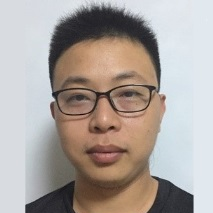Machine-Learning-Assisted Sensors
A special issue of Micromachines (ISSN 2072-666X). This special issue belongs to the section "E:Engineering and Technology".
Deadline for manuscript submissions: closed (31 October 2023) | Viewed by 8988
Special Issue Editor
Special Issue Information
Dear Colleagues,
Technological advancements have facilitated the manufacturing of compact, inexpensive, and low-power consuming sensors for smart devices. The data fusion filter plays an important role in the estimation of positioning and navigation. The traditional multi-sensor data fusion algorithm has effectively improved the accuracy of sensors. However, with the increase in the complexity of the sensor’s structure, accurate data fusion modeling is challenged. Machine learning (ML) brings new opportunities for the improvement of sensor accuracy. For example, ML-assisted filtering can improve the accuracy of navigation. Thus, this Special Issue aims to include research papers and review articles that focus on: (1) ML-assisted of intelligent logistics robot; (2) ML-assisted scheduling optimization of intelligent logistics equipment; (3) ML-assisted filtering for sensor data fusion and its application; (4) complex sensor model construction using the ML method; and (5) smart driving system.
We look forward to receiving your contributions.
Dr. Yuan Xu
Guest Editor
Manuscript Submission Information
Manuscripts should be submitted online at www.mdpi.com by registering and logging in to this website. Once you are registered, click here to go to the submission form. Manuscripts can be submitted until the deadline. All submissions that pass pre-check are peer-reviewed. Accepted papers will be published continuously in the journal (as soon as accepted) and will be listed together on the special issue website. Research articles, review articles as well as communications are invited. For planned papers, a title and short abstract (about 100 words) can be sent to the Editorial Office for announcement on this website.
Submitted manuscripts should not have been published previously, nor be under consideration for publication elsewhere (except conference proceedings papers). All manuscripts are thoroughly refereed through a single-blind peer-review process. A guide for authors and other relevant information for submission of manuscripts is available on the Instructions for Authors page. Micromachines is an international peer-reviewed open access monthly journal published by MDPI.
Please visit the Instructions for Authors page before submitting a manuscript. The Article Processing Charge (APC) for publication in this open access journal is 2600 CHF (Swiss Francs). Submitted papers should be well formatted and use good English. Authors may use MDPI's English editing service prior to publication or during author revisions.
Keywords
- machine learning
- Kalman filter
- scheduling optimization






